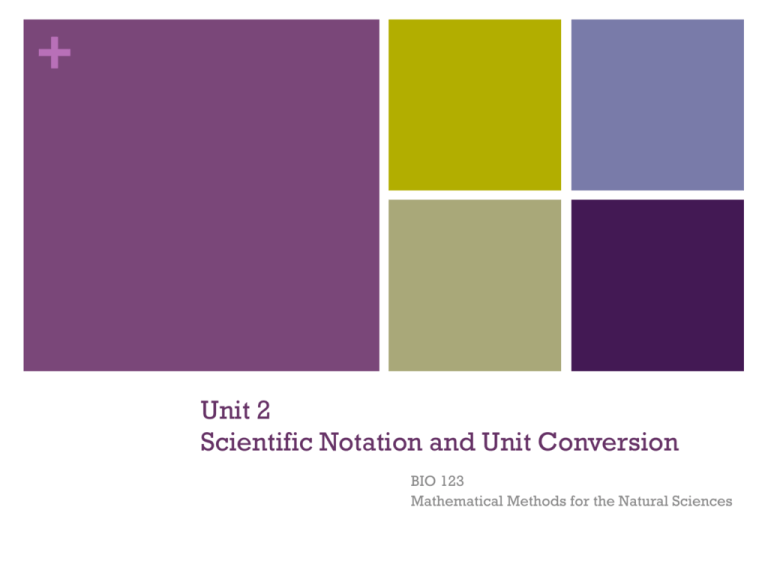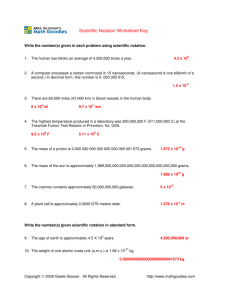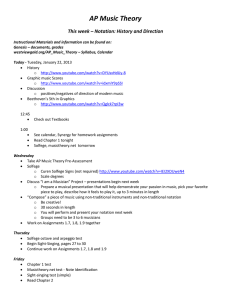Unit 2 Scientific Notation and Unit Conversion
advertisement

+ Unit 2 Scientific Notation and Unit Conversion BIO 123 Mathematical Methods for the Natural Sciences + Introduction n In this unit, you will learn the valuable skills of scientific notation and unit conversion. n Why do you need to know scientific notation? n n n Scientific notation comes in handy when you are dealing with very small or very large numbers. It basically saves you from writing many 0’s. There are about 7,000,000,000 people on earth (that’s 7 billion). To save myself from writing out those 9 0’s, in scientific notation I could just write 7 x 109. Why do you need to know unit conversion? n n I think a more appropriate question is, “why DON’T you need to know unit conversion?”. If you are a scientist of any kind, unit conversion will be a part of your life, and it’s best that you embrace it as soon as possible. There is an example on the next page! + Unit Conversion Example n Before you do anything, watch this YouTube video (it’s only 4 minutes long) giving a great introduction to unit conversion: n n http://www.youtube.com/watch?v=XKCZn5MLKvk If you haven’t noticed yet, I really love YouTube. + Unit Conversion Example n You are a medical doctor. You have a patient that has an underactive thyroid gland, which means she is feeling fatigued and is at risk for serious medical problems in the future, such as heart disease, if it isn’t managed. n To treat underactive thyroid, you give synthetic thyroid hormone. The optimal dosage is 1.7 μg/kg. However, the pills only come in mg, and you only know the weight of your patient in lbs. n Keep in mind that if you underdose her, she will continue to have symptoms and possible die of a heart condition later in life. n If you overdose her, she will have insomnia and heart palpitations. It is important that you can do unit conversion so that you can properly treat your patient. n + Unit Conversion Example n In the coursebook, you’ll find that 1000μg = 1 mg, and that 1 pound = 0.4536 kg. Your patient weighs 130 pounds. n Here is how I did it:









